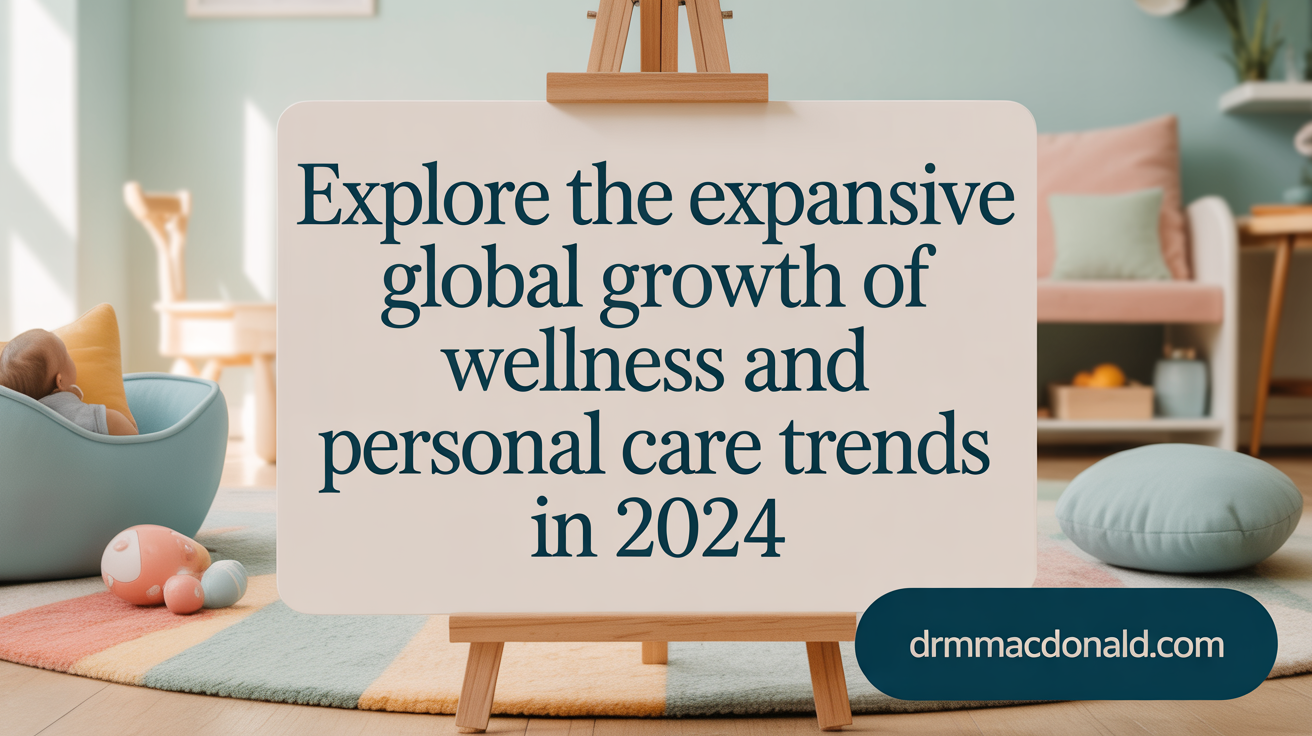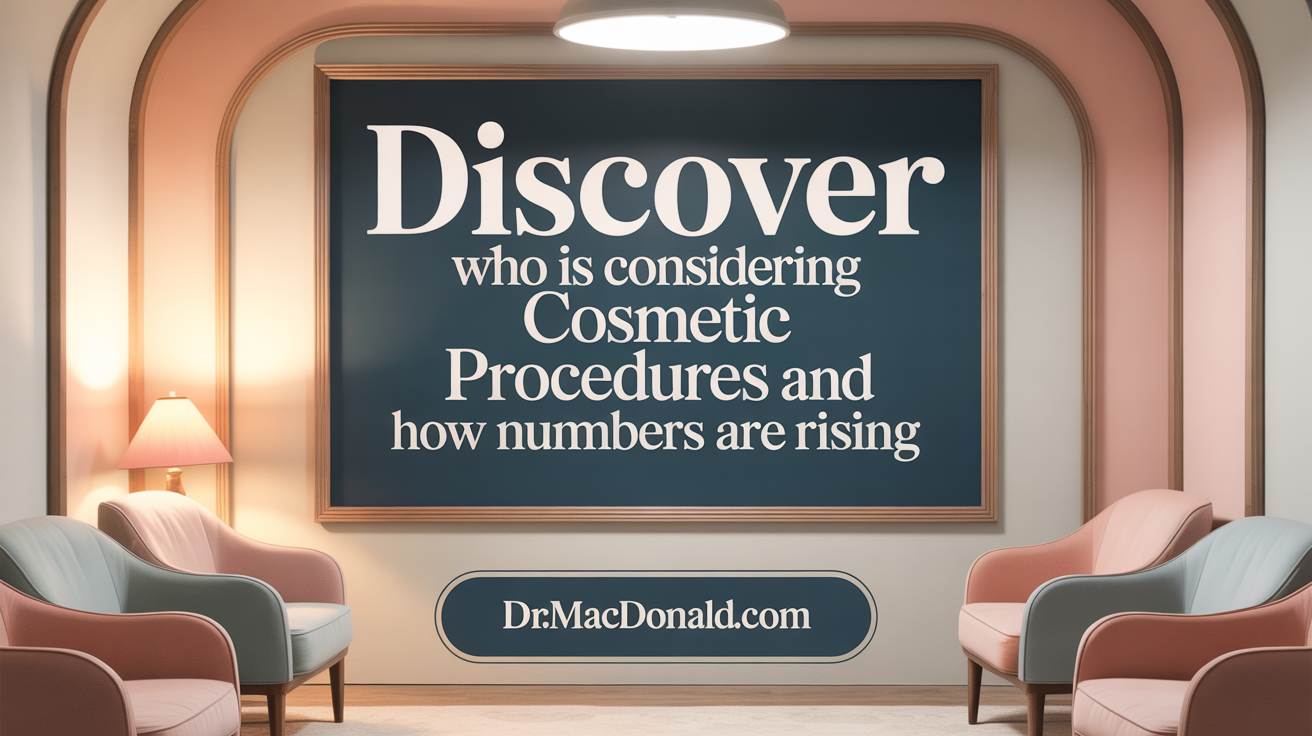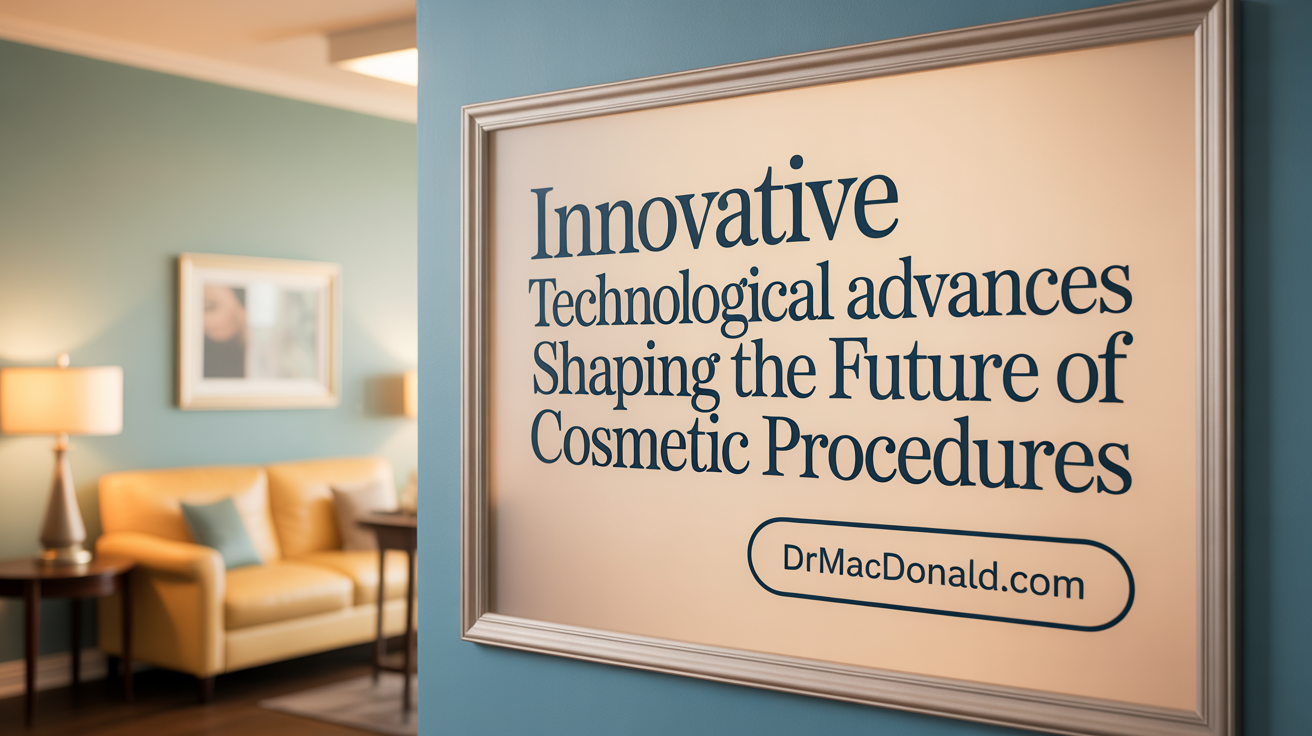An Era of Transformation in Aesthetic Procedures
With the aesthetic industry undergoing remarkable evolution, minimally invasive cosmetic procedures have become the cornerstone of modern beauty treatments worldwide. This article explores the insightful statistics, growth dynamics, technological innovations, and shifting consumer preferences that define the current landscape and future trajectory of minimally invasive cosmetic procedures. Drawing from the latest global data, including trends from 2023 and 2024, we unravel how these procedures are reshaping the cosmetic surgery domain with effectiveness and rapid market expansion.
Global Scale and Growth Patterns in Cosmetic Procedures

What are the worldwide statistics and trends related to plastic and minimally invasive cosmetic procedures?
The global landscape of cosmetic procedures continues to grow robustly. In 2024, an estimated 38 million procedures were performed worldwide, showing a 40% increase since 2020. This surge reflects the rising popularity of both surgical and non-surgical treatments across the globe.
Non-invasive treatments, led by neuromodulators like Botox and soft tissue fillers such as hyaluronic acid, dominate this market. Over 20.5 million non-invasive procedures were recorded in 2024, highlighting a preference for treatments that offer quick results with minimal downtime.
Surgical procedures remain highly sought after, with eyelid surgeries surpassing liposuction in popularity. Overall, more than 17.4 million surgical interventions were performed, encompassing operations like liposuction, breast augmentation, and rhinoplasty. These trends demonstrate a consistent global shift toward facial rejuvenation and minimally invasive techniques.
The United States and Brazil are at the forefront, leading in procedural volume due to large, youthful populations eager for aesthetic enhancements. Despite economic fluctuations, the industry exhibits resilience, driven by increasing social acceptance and technological innovations.
In sum, the worldwide cosmetic industry reflects a dynamic and expanding market, with strong demands for both surgical and nonsurgical procedures across diverse demographics and regions.
Annual Volume and Demographic Distribution of Minimally Invasive and Surgical Procedures

How many people undergo plastic surgery annually, including minimally invasive treatments?
In 2023, approximately 34.9 million aesthetic procedures were performed worldwide, covering both surgical and non-surgical options. Among these, over 15.8 million were surgical procedures, such as liposuction, breast augmentation, and eyelid surgery. The rest, more than 19.1 million, consisted of minimally invasive treatments like Botox, fillers, and skin resurfacing.
In the United States alone, about 15.4 million Americans underwent some form of cosmetic plastic surgery in 2023, with an additional 13.2 million opting for minimally invasive procedures. These numbers show a consistent upward trend, with the total number of procedures increasing by roughly 40% over the past four years.
This steady growth reflects the rising popularity and acceptance of less invasive options, which offer quick results with minimal downtime. Both globally and locally, millions of individuals seek aesthetic enhancements each year, emphasizing the expanding scope and influence of the cosmetic industry.
Popular Procedures in Minimally Invasive and Surgical Categories by Gender

What are the most common plastic and minimally invasive cosmetic procedures for females and males?
In 2024, cosmetic procedures continue to diversify across gender lines, with distinct preferences emerging for both women and men. For women, the most sought-after minimally invasive treatments include neuromodulator injections such as Botox, dermal fillers like hyaluronic acid, skin resurfacing techniques, and lip augmentation. These procedures are favored because they offer quick results, minimal downtime, and natural-looking outcomes. Surgical options like breast augmentation, liposuction, and eyelid surgery remain among the top choices, reflecting long-standing preferences for body and facial enhancements.
Men’s trends show increased participation in cosmetic procedures. The most common minimally invasive treatments for men are neuromodulator injections and dermal fillers, especially in areas such as the forehead, glabellar lines, and jawline. Body contouring procedures like gynecomastia surgery are particularly popular among men, helping them achieve a more masculine chest contour. Liposuction and chin augmentation also see rising popularity, highlighting a focus on facial and body reshaping.
Trends in minimally invasive treatments and surgical choices
Overall, women constitute about 84% of all cosmetic surgeries, but the gap is narrowing as male participation grows steadily. The ease and affordability of minimally invasive procedures contribute to their popularity, especially among younger populations who prefer less invasive options with quick recovery times.
Both genders show a trend toward natural results, with over 85% of patients in 2024 opting for subtle enhancements that maintain their essential features. Younger adults, particularly those in their 30s and 40s, are increasingly choosing early interventions with minimally invasive procedures to prevent signs of aging.
Rising male participation and procedure preferences
Male participation in aesthetic procedures has increased noticeably. From 2000 to 2024, the number of men undergoing cosmetic procedures has grown by around 45%, now representing nearly 15% of total treatments. The most common treatments for men include Botox and fillers for facial rejuvenation, along with contouring procedures like liposuction and chin augmentation.
This shift is influenced by changing social norms and greater acceptance of cosmetic enhancement among men. Market data indicate a higher demand for treatments that help maintain a youthful, groomed appearance without conspicuous changes. Clinics increasingly tailor their offerings for male clients, emphasizing subtle, natural results to meet growing expectations.
| Gender | Most Common Procedures | Focus Areas | Growth Trends |
|---|---|---|---|
| Females | Botox, fillers, lip augmentation, eyelid surgery | Face and Lips | Consistent increase, especially in minimally invasive treatments |
| Males | Botox, fillers, gynecomastia surgery, liposuction | Face, Body | Significant growth, with more tailored treatments for male aesthetics |
The evolving landscape highlights a broader acceptance and desire across genders for aesthetic enhancement, with a clear move toward procedures that are effective, subtle, and quick to recover.
Current and Projected Trends in Minimally Invasive Cosmetic Procedures

What are the current and projected future trends for plastic and minimally invasive cosmetic procedures?
The landscape of cosmetic treatments is increasingly leaning toward non-surgical options, which now make up roughly 80% of all procedures, reflecting patients’ desire for quick results with minimal recovery time. In 2024, minimally invasive treatments such as botulinum toxin (Botox), hyaluronic acid fillers, chemical peels, and skin resurfacing are particularly popular. These procedures offer a high satisfaction rate, with patient approval exceeding 80% for options like thread lifts and radiofrequency treatments.
The growth in minimally invasive procedures is robust. Globally, there has been a 40% increase in aesthetic procedures over the last four years, with non-surgical methods expanding at a faster pace than traditional surgeries. In 2023 alone, nearly 25.4 million minimally invasive treatments were performed worldwide, driven by technological advancements that improve safety, accuracy, and aesthetic outcomes.
Projections for the future suggest that this upward trend will continue strongly through 2030. Experts anticipate a 40% increase in minimally invasive procedures by 2026. Emerging treatments such as platelet-rich plasma (PRP), stem cell therapies, and new neuromodulators like Daxxify and AviClear are expected to further revolutionize facial rejuvenation and body contouring practices.
Demographic shifts also shape future trends. There is a noticeable rise in procedures among men, now accounting for about 14.5% of all treatments, and among younger adults who prioritize non-invasive options. Additionally, the popularity of weight loss medications like GLP-1 drugs is influencing facial and body contouring post-weight loss, with surgeons playing a growing role in reshaping faces and bodies following significant weight changes.
Overall, technological innovations, changing societal perceptions, and expanding consumer demographics will likely sustain strong growth in minimally invasive cosmetic procedures, making them the mainstay of aesthetic medicine for years to come.
Technological Innovations Driving Growth and Clinical Effectiveness

What are the key technological advances impacting the growth and effectiveness of minimally invasive cosmetic procedures?
Recent years have seen significant technological progress that boosts the safety, efficacy, and appeal of minimally invasive treatments. Advanced devices such as laser, ultrasound, and radiofrequency (RF) systems are now commonplace. These instruments allow practitioners to achieve more precise results with less downtime, which appeals to busy patients seeking quick recovery.
Artificial intelligence (AI) has also become increasingly influential. It aids in accurate diagnosis, treatment planning, and even robotic-assisted surgeries, all of which enhance outcomes and reduce risks. AI-powered tools help customize procedures to fit individual needs, making treatments more effective.
Immersive technologies like virtual reality (VR), augmented reality (AR), and mixed reality (MR) are starting to play a role. They provide real-time guidance during procedures, assist in practitioner training, and enable shared decision-making between doctors and patients. This integration of technology increases procedural precision and patient satisfaction.
Innovations in injectables include new formulations and delivery methods that extend longevity and improve safety. Microneedling combined with RF or platelet-rich plasma (PRP) enhances skin rejuvenation, while cryolipolysis (fat freezing) offers non-surgical contouring options. These advancements provide more diverse and effective minimally invasive treatments.
Overall, technological breakthroughs are fueling a boom in the industry, making procedures safer, more predictable, and more aligned with patient expectations of less invasive options that deliver natural-looking results.
Comparison of Effectiveness and Market Growth Among Minimally Invasive Procedures
Minimally invasive procedures in dermatology, such as laser treatments, chemical peels, cryosurgery, and injectables like Botox and dermal fillers, have become popular due to their high effectiveness and convenience. Their success rates are notable—for example, Mohs micrographic surgery can reach up to 99% success in treating skin cancers. These treatments often provide immediate or quick results with minimal discomfort and downtime, making them attractive options for patients.
The market for these procedures is booming. Key drivers include ongoing technological innovations, a broader array of treatment options, and rising consumer demand for both cosmetic and therapeutic benefits. Procedures like botulinum toxin injections and hyaluronic acid fillers alone saw over 9 million and 5 million treatments globally in 2023, reflecting their increasing popularity.
Compared to traditional surgeries, minimally invasive methods offer clear advantages. They typically involve less pain, scarring, and risk of complications, along with shorter recovery periods. This makes them particularly appealing for busy professionals and younger demographics seeking quick, effective results.
Emerging advancements such as artificial intelligence, telemedicine, and robotic assistance are set to further improve treatment precision, safety, and accessibility. For example, AI-powered pre-visualization tools help patients set realistic expectations, enhancing satisfaction rates. Robots are increasingly used for precise injections and laser procedures.
Overall, these procedures not only deliver high success and satisfaction but are also driving rapid industry growth. The global market is expected to reach nearly $200 billion by 2031, underpinned by continuous innovation and expanding patient acceptance. This trend underscores the vital role of minimally invasive treatments in both aesthetic and medical dermatology, making them the cornerstone of modern skincare.
Key Industry Metrics and Research Performance Indicators
What are the key performance indicators and metrics used in research on the minimally invasive cosmetic industry?
Research into the minimally invasive cosmetic industry relies on several core metrics that gauge its size, growth, and consumer satisfaction. Procedure volume is a primary indicator; in 2023, approximately 35 million procedures were performed worldwide, encompassing both surgical and nonsurgical treatments.
Market size estimation is another crucial metric. In 2024, the global market value exceeded USD 6.25 billion, with projections estimating it to reach USD 8.64 billion by 2034. These figures reflect robust industry expansion driven by technological advances and shifting consumer preferences.
Growth rates are vital to understanding market dynamics. The industry is experiencing a compound annual growth rate (CAGR) of about 8.06% from 2024 to 2032 and an estimated 3.29% from 2025 to 2034, indicating steady, sustained progress.
Market segmentation data further illuminate the industry landscape. The share of non-invasive procedures—such as botulinum toxin and dermal fillers—dominates, but invasive options like liposuction and rhinoplasty continue to hold significant market segments, particularly in regions like North America and Asia-Pacific.
Specific procedure metrics highlight preferences and trends. For instance, lip augmentation saw about 900,000 surgeries in 2023, and botulinum toxin treatments approached 4.72 million cases, confirming their popularity.
Patient satisfaction and psychological outcomes are critical qualitative measures. Tools like the FACE-Q scales have demonstrated high reliability and validity in assessing satisfaction and psychosocial benefits, providing valuable insights into treatment effectiveness from the patient's perspective.
These combined indicators allow industry analysts and researchers to track progress, identify emerging trends, and enhance patient care through evidence-based practices.
Consumer Preferences, Demographic Shifts, and Market Dynamics
How do demographic and socioeconomic factors influence trends in minimally invasive cosmetic procedures?
Recent data shows that demographic and financial factors significantly impact who undergoes minimally invasive treatments like Botox and dermal fillers. Studies indicate disparities in spending, with White and Asian populations generally allocating more money for these procedures compared to African American and Hispanic groups. This difference is largely driven by variations in economic stability and access to aesthetic services.
Despite these disparities, the overall volume of cosmetic procedures has remained remarkably steady from 2012 through 2020. But when looking at individual spending patterns, it’s clear that interest levels and willingness to pay can vary considerably across different demographic segments.
Globally, the demand for minimally invasive treatments has surged. Technologies such as neuromodulators and soft tissue fillers have become exceedingly popular, particularly among women. These procedures are appealing due to their quick results, minimal recovery time, and affordability.
What trends are emerging in consumer diversity and cultural acceptance?
The consumer base is becoming increasingly diverse. Women continue to comprise the majority of patients, but male participation is growing steadily, representing about 14-15% of procedures. Younger adults, especially those aged 19 to 35, are embracing minimally invasive options more than ever, often choosing procedures that allow them to maintain natural appearances.
Cultural acceptance of cosmetic treatments has expanded, partly driven by social media and changing societal attitudes toward aging and self-care. Noninvasive procedures are viewed as accessible, safe, and effective, encouraging a wider demographic to consider aesthetics as part of regular health and wellness routines.
How do social media and cultural acceptance influence these trends?
Social media platforms play a pivotal role in shaping perceptions of beauty and normalizing cosmetic procedures. Influencers and celebrities openly discussing their treatments create a culture of acceptance and desire for youthful, refreshed looks.
This openness fosters greater social acceptance and reduces stigma, especially among Millennials and Generation Z, who are more likely to seek noninvasive procedures. As a result, clinics and practitioners tailor their marketing strategies to appeal to a broader, more diverse audience.
In summary
The evolving landscape of cosmetic procedures is deeply influenced by demographic and economic factors. As awareness and acceptance grow across different racial, socioeconomic, and age groups—further amplified by social media—the market continues to expand. Personalization and inclusivity are becoming integral to industry growth, emphasizing the importance of understanding demographic shifts and cultural trends in shaping future directions.
Impact of Minimally Invasive Procedures on the Aesthetic Industry and Practice Patterns
How do minimally invasive cosmetic procedures impact the overall aesthetic industry and practice patterns?
Minimally invasive cosmetic procedures have brought about a major transformation in the aesthetic sector. In 2023, they accounted for more than 83% of all procedures globally, reflecting a shift toward less invasive options that appeal to a broad demographic. The market for non-invasive treatments is expected to reach approximately $171.3 billion by 2030, signifying sustained growth and industry expansion.
These procedures are popular due to their many advantages. They generally involve less risk, have shorter recovery times, and produce more natural-looking results. As a result, consumer acceptance has surged, driven by increasing awareness through social media and a shift in demographic preferences. Younger adults and middle-aged groups especially favor treatments like Botox, dermal fillers, and skin rejuvenation techniques.
Practice patterns have also evolved. There is a noticeable shift toward outpatient clinics and MedSpas, where practitioners offer personalized, non-invasive treatments. This setting is preferred for its convenience, lower cost, and privacy advantages over traditional surgical environments.
Technological innovations such as AI, 3D imaging, and advanced treatment devices have played a crucial role. These tools enable practitioners to tailor treatments more precisely, enhance outcomes, and improve patient satisfaction. The industry is also characterized by ongoing product innovation, with new formulations and devices expanding treatment options.
Furthermore, the growth of the aesthetic market is supported by increased accessibility. Non-invasive procedures are less expensive and often require no downtime, making them more appealing to busy professionals and social media influencers.
Overall, minimally invasive techniques have revolutionized the aesthetic landscape. They make cosmetic improvements more attainable, foster patient confidence, and continue to drive industry growth, ensuring their dominant role in aesthetic practices well into the future.
Historical Context and Future Outlook for Minimally Invasive Cosmetic Procedures
How has minimally invasive cosmetic procedures evolved from the early 2000s to the present?
Since the early 2000s, the field of cosmetic procedures has experienced steady growth, with a particular surge in minimally invasive options. Starting with the introduction of dermal fillers in 1981 and toxins like Botox in 1989, the industry saw a rapid evolution of treatments that require minimal downtime and offer quick results. Over the past two decades, minimally invasive procedures have increased by approximately 115%, driven by technological advances, improving safety standards, and changing societal attitudes.
In recent years, non-surgical procedures such as botulinum toxin treatments and soft tissue fillers have expanded significantly. For example, since 2000, botulinum toxin treatments have increased by 759%, and filler usage by 274%. The popularity of procedures like lip augmentation, skin resurfacing, and non-invasive fat reduction has also skyrocketed, reflecting their effectiveness and patient preference for natural-looking, subtly enhanced appearances.
What role do safety improvements and patient education play in shaping this trend?
Advances in safety protocols and comprehensive patient education have been pivotal in the growth of minimally invasive cosmetic treatments. The industry has prioritized safety, leading to a 50% decrease in complication rates over the past decade. These improvements have built consumer confidence, encouraging higher participation across all age groups.
Technological innovations such as pre-procedure visualization tools have increased patient satisfaction by 35%, enabling individuals to see expected results more clearly. Better safety measures and clear communication about what to expect help patients make informed decisions, reducing hesitations and increasing the acceptance of these treatments.
What are the projections for minimally invasive procedures through 2031 and beyond?
Looking forward, the global market for non-invasive and minimally invasive aesthetic treatments is projected to continue expanding rapidly. The market, valued at around USD 61.2 billion in 2022, is expected to reach approximately $190.5 billion by 2030, with a compound annual growth rate of 15.4%. Experts forecast a 40% increase in minimally invasive procedures by 2026.
Innovation remains a driving force, with new products like Daxxify, Alluzience, and AviClear addressing previous limitations and expanding options for consumers. The rising popularity of newer treatments and technological improvements will likely sustain double-digit growth, shaped by an increasing demographic interest, especially among men, younger adults, and older populations seeking anti-aging solutions.
Overall, the trajectory indicates that minimally invasive procedures will continue to dominate the industry, driven by safety advancements, improved results, and evolving consumer preferences.
Shaping the Future of Cosmetic Procedures with Minimally Invasive Innovations
The exploding demand and growth of minimally invasive cosmetic procedures reflect a significant shift in beauty and health practices worldwide. Fueled by cutting-edge technology, changing consumer demographics, and a preference for natural, less disruptive treatments, the industry is poised for robust expansion. Safety enhancements, effectiveness improvements, and personalized patient experiences underscore this transformative era. Looking forward, continued innovation and accessibility will likely propel the minimally invasive segment to dominate the aesthetic market, fundamentally reshaping practice patterns and consumer expectations for years to come.
References
- Plastic Surgery Statistics 2024 - American Society of Plastic Surgeons
- Trends in Surgical and Nonsurgical Aesthetic Procedures - PubMed
- Plastic Surgery Statistics & Facts - Supportive Care
- Here to stay: An attractive future for medical aesthetics - McKinsey
- Top Plastic Surgery Trends for 2025 - Dr Ali
- Plastic Surgery Statistics, Trends, Insights - Digital Spotlight
- Unpacking the Latest Minimally Invasive Aesthetic Surgery Trends ...
- Non-invasive Aesthetic Treatment Market Size Report, 2030
